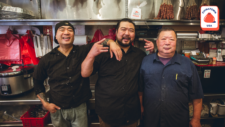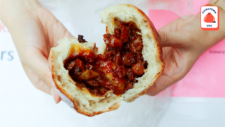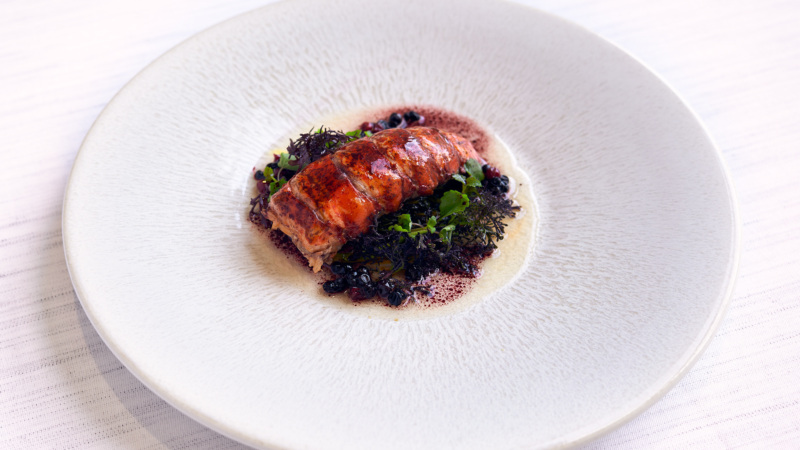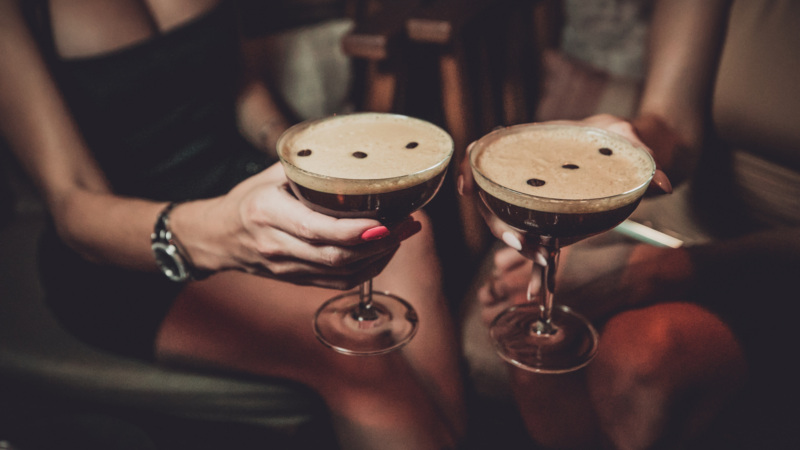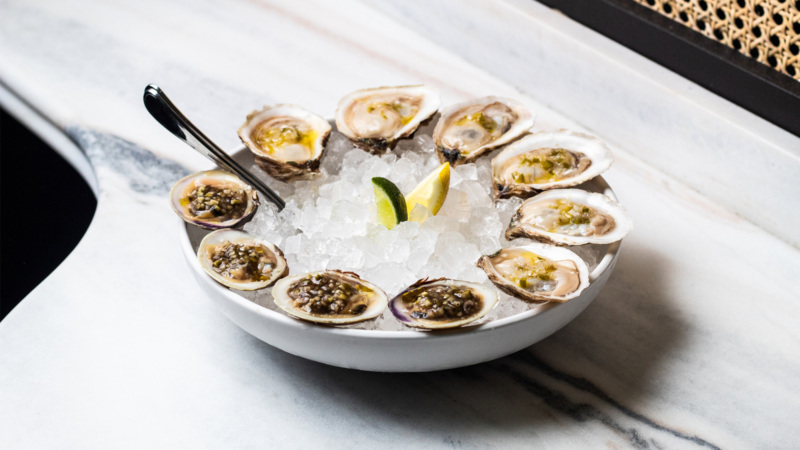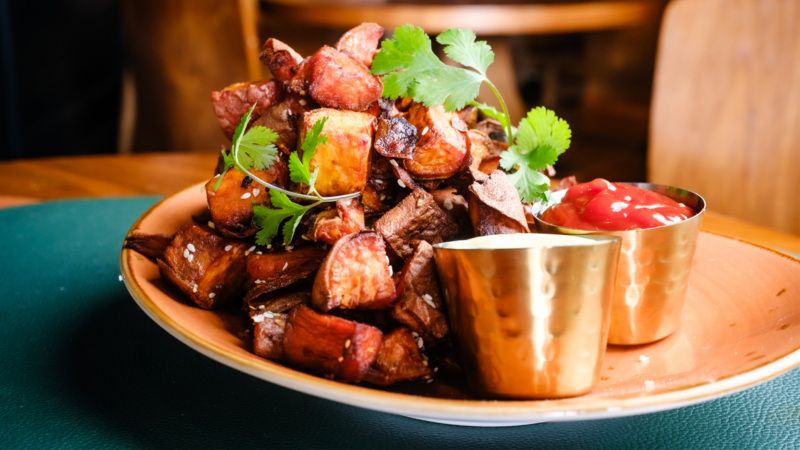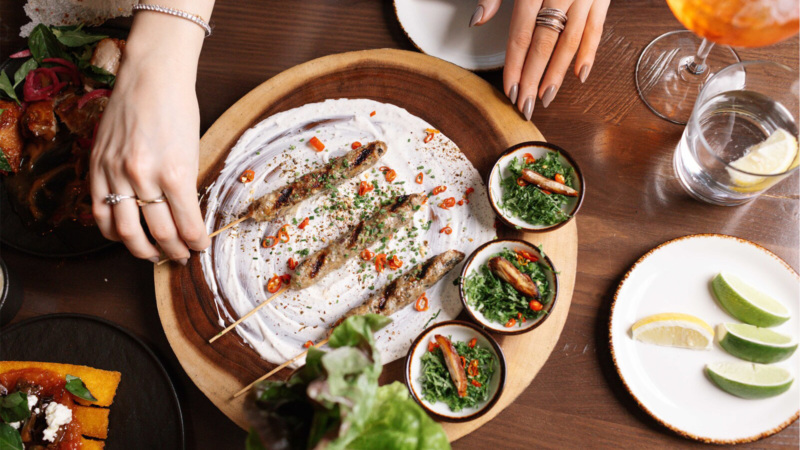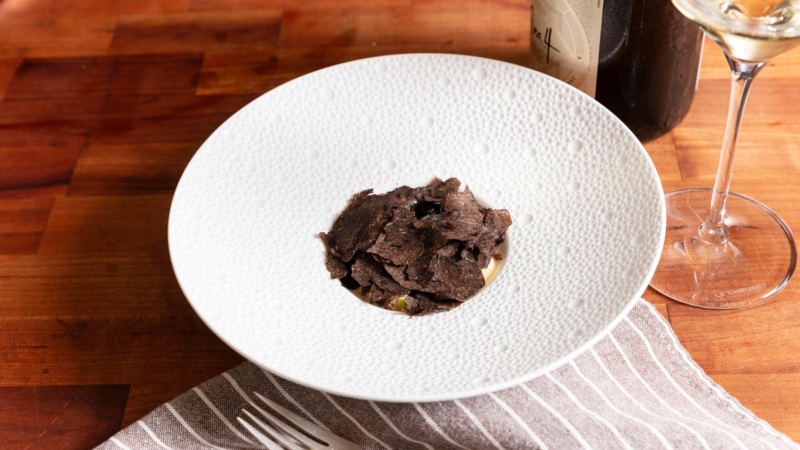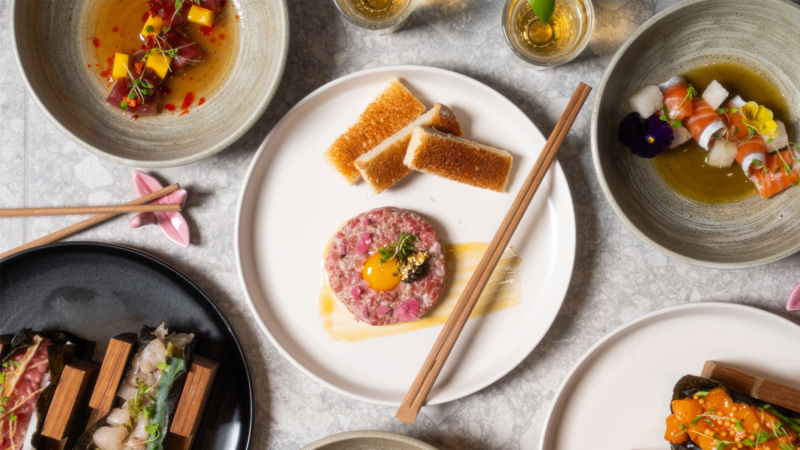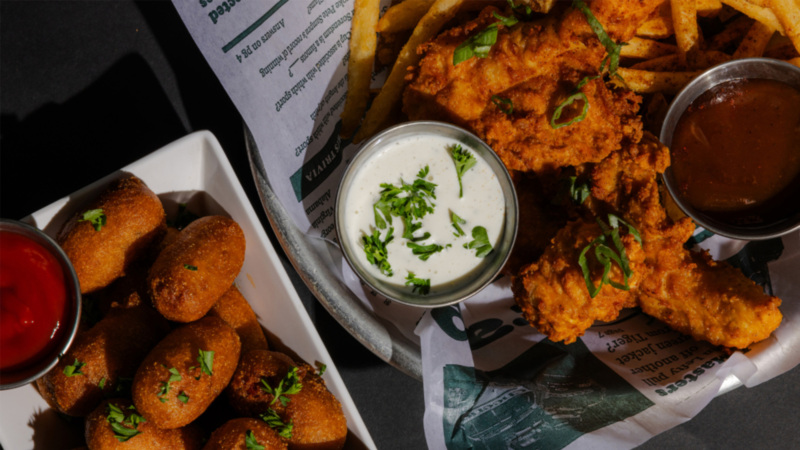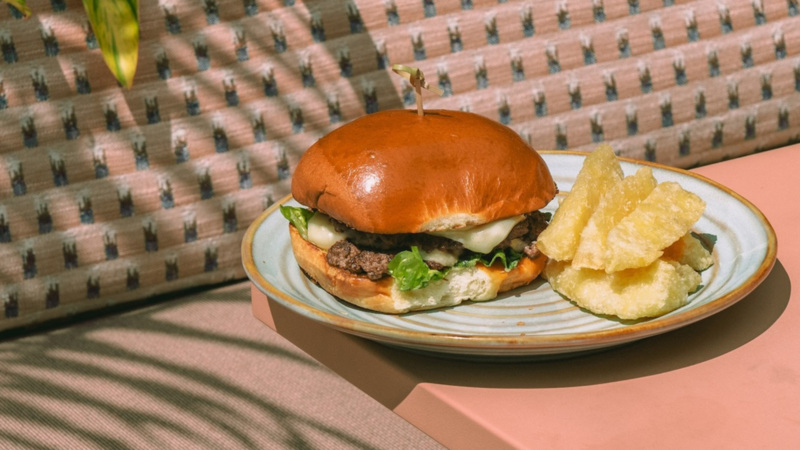
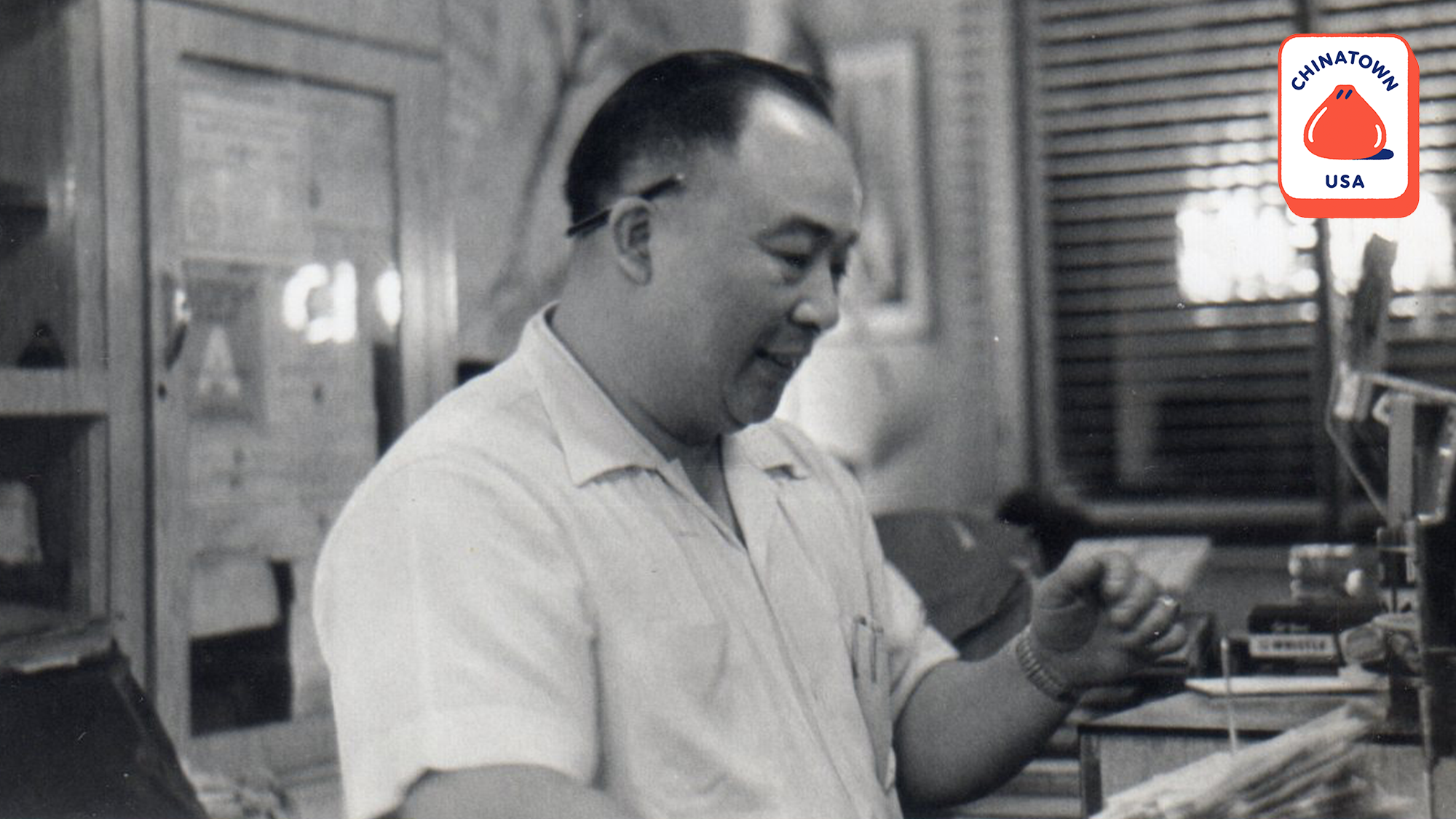
One Family’s Story,
From Toisan to Wichita
This is the story, untold until now, of a Chinese immigrant, Young Mar, who opened one of the earliest Chinese restaurants in Kansas in the 1940s.
Young Mar arrived in San Francisco’s Chinatown in 1920 at the age of seven. His mother brought him with her from Toisan, China. He was from the same village from which so many of the earliest Chinese immigrants to America first came, one where Toisanese, not Mandarin or Cantonese, is spoken. It’s a dialect you might still hear in the U.S., usually only in Chinatowns.
As soon as he arrived, he was put to work at the family’s import/export business, Ying Cheong. Their specialty was salted fish from Toisan, but they carried everything from spices like star anise and white pepper to staples like tofu, and fresh produce like bok choy and napa cabbage.
Everything he learned thereafter, he taught himself, whether it was how to read and write in English, how to flip hamburgers, how to play pool, or how to throw a jab. And how to run restaurants.
When he was 19, in 1932, he traveled back to his village and he married 17-year-old Shan Yung “Susie” Wong. It was an arranged marriage; the two never met until the day of their wedding.
As swiftly as he married her, however, Young left her to go back to America to find a way to support her and the family he always wanted. He spent the next 24 years writing letters to his representatives, trying to circumvent the Chinese Exclusion Act and immigration quotas, as well as World War II, to find a way to bring her home.
In between brief visits back to China to see his wife, he became a cook and eventually a restaurant owner in, of all places, Kansas. It’s unclear what drew him to the middle of the country, where bok choy and salted fish were nonexistent at the time, let alone the kind of Chinese community he was surrounded by in San Francisco.
He was a restaurateur at a time when it was one of the few businesses that he, as a Chinese American immigrant, could have.
Together, with his business partner, Wah Mar, they opened The Circle in the 1940s in Junction City, Kansas. It was a favorite among soldiers at nearby Fort Riley. Film star Gene Tierney, whose husband was stationed there, was a regular. In 1952, they opened Mar’s Bar-B-Que in Wichita, and it expanded to become Mar’s Gardens in 1953.
Three years later, in 1956, Susie, along with their daughters, Linda and Goldie, finally made their way to Wichita. But the family was still incomplete: Their youngest, a baby named Edward, was still in Hong Kong. He would join them in 1964 when he was eight years old.
Young’s story likely sounds familiar to you — an immigrant tale of someone trying to make it in America. Someone seeking the American Dream. Someone who moved to the heartland of a country that had already spent decades trying to exclude him. Someone who wound up in a completely unfamiliar place where he brought his own culture and traditions with him, and where he had to find a way to fit in. But for me? It’s the story of my own grandfather, a man I never got to meet, but whose hard work and whose restaurants impacted so many.
It wasn’t idyllic when my mom, aunt, and grandmother arrived in Kansas. Wichita was worlds apart from the one-room flat they shared with multiple families in Hong Kong after the war ended.
There was racism, of course. Another student in school struck my mom with a baseball bat. Other students called my aunt and mom “Chinamen” and “chinks.” There were the stares neighbors gave them when they moved in. There was culture shock.
And yet. An old Wichita Beacon clipping advertising the grand opening of Mar’s Gardens deftly dispels any conceptions people might have about Chinese food or Chinese restaurants at the time. It is “modern,” it is “air-conditioned,” it is “well equipped and staffed.” There’s free coffee and cookies. It’s “the ideal place for the whole family.” It lists the names of all their vendors: established butchers, dairymen, and coffee companies — well-wishers who could vouch for the quality of the restaurant and its proprietors. More importantly, they were non-Chinese business people who were openly showing their support for this Chinese-owned restaurant.
➖
GALLERY: YOUNG MAR’S STORY, IN IMAGES
➖
Both Mar’s Gardens and The Circle would make so much of the life my family shared in Wichita possible.
In the summer when school wasn’t in session, my grandfather loved taking his daughters to work. The irony was, he never wanted them to work in a restaurant. He wanted them to graduate college and receive the schooling he never did. He wanted them to learn how to speak English at school, instead of teaching it to themselves, as he had. He wanted them to be able to choose their own careers, their own paths.
But bringing them to work was a way for him to connect with the girls, whom he’d only ever known through letters and photographs. At the time, he oversaw the day-to-day operations of Mar’s Gardens, and he and Uncle Wah, as the family called him, would make regular visits to The Circle.
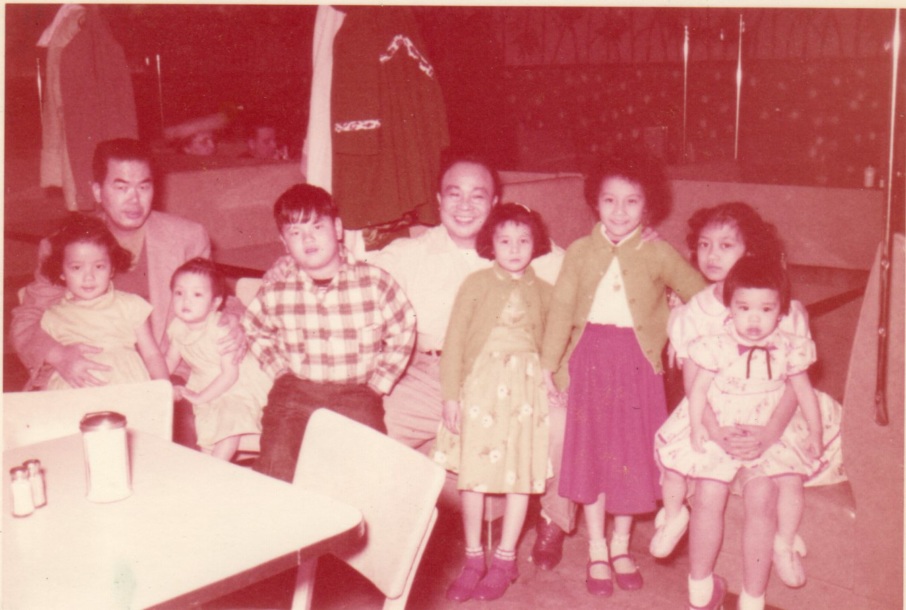
To this day, my mom and aunt have vivid memories from those trips to Mar’s Gardens on East Harry Street. Of being half-asleep in my grandfather’s Buick Skylark as he shuttled from vendor to vendor at dawn. Playing in his office, pretending to be restaurant owners themselves by using my grandfather’s old, tattered receipt books. Watching their dad clean tables, ring up customers, or sometimes even step behind the line when things got really busy. Noticing the tiny Chinese-English dictionary he carried in his pocket at all times, just in case.
My mom says she would often walk through the kitchen, past repurposed garbage cans as tall as she was, where the chefs grew mung bean sprouts for the chop suey. There were always piles of potatoes waiting to be peeled. Sometimes there were boxes from Ying Cheong, filled with spices or their famed salted fish.
There was the sizzle and the heat of the woks. The smell of Uncle Wah’s freshly baked popover rolls and his pies, almost always served à la mode. The chefs prepared everything with ease, whether they were American standards like fried chicken, hamburgers, and turkey with stuffing, or American Chinese food like chicken chow mein with crispy noodles, sweet-and-sour pork, and egg rolls.
Most of the customers weren’t Chinese. First-timers usually stuck to the “American” side of the menu, with burgers, fries, and shakes. But over time, they ventured to the other side, trying Chinese food that was specifically engineered to appeal to Midwestern palates: food that wasn’t intimidating, but just different enough. It was food that played with flavors and textures like sweet, sour, salty, fried, and crunchy.
When the chefs weren’t cooking for customers, they made Chinese food that reminded them of home. And sometimes, if my mom was lucky and her dad wasn’t looking, Uncle Mickey, the fry cook, would slip her bites of deep-fried butterflied shrimp, one of the restaurant’s signature dishes.
The waitresses treated my mom and aunt like their own daughters, sometimes even taking them to doctor appointments when their dad was tied up at the restaurant. That was the one bad thing about the restaurant: It was grueling work. My grandfather worked from dawn until midnight most days.
On his days off, which were rare, he transported pots of my grandmother’s homemade winter melon soup to share with other Chinese families in the local community. He cooked dishes like braised pig ears or spaghetti and meatballs (my mom’s favorite). Or he’d even make dim sum.
Over time, Wichita began to feel like home. At one point, the mayor even gave my grandfather an honorary key to the city for his service to the community. The neighbors stopped scowling when they received bundles of vegetables from my grandmother’s garden. And the mere fact that Mar’s Gardens could expand after just a year in business was a testament to the fact that locals loved the restaurant. They kept coming back.
▪️
Every year around Christmas, my grandfather hosted the entire restaurant staff to dinner at his house, and the whole family would cook for them. They gathered in the basement where he had painted the walls with flowers and stars, echoing the intricate dragons he’d also painted on the walls of the restaurant. They toasted with the same emerald green goblets my aunt Linda brings out every year at Thanksgiving and Christmas. Those celebrations were his way of showing his appreciation for all the work his staff put in over so many years, a gesture to show how much they meant to him.
Despite my grandfather’s wishes, the family didn’t entirely avoid the restaurant business. In 1971, when my uncle was 15, he started working at Mar’s Gardens as a busboy and dishwasher. He got no special treatment, even though he was the owner’s son. And today he has fond memories of firing up the wok to make himself the occasional beef chop suey, learning from the cooks, and helping them with prep work — cutting lettuce or peeling potatoes, watching his father laugh along with the regulars.
Eventually, it was assumed he’d learn to be a cook and maybe even take over. That never came to be.
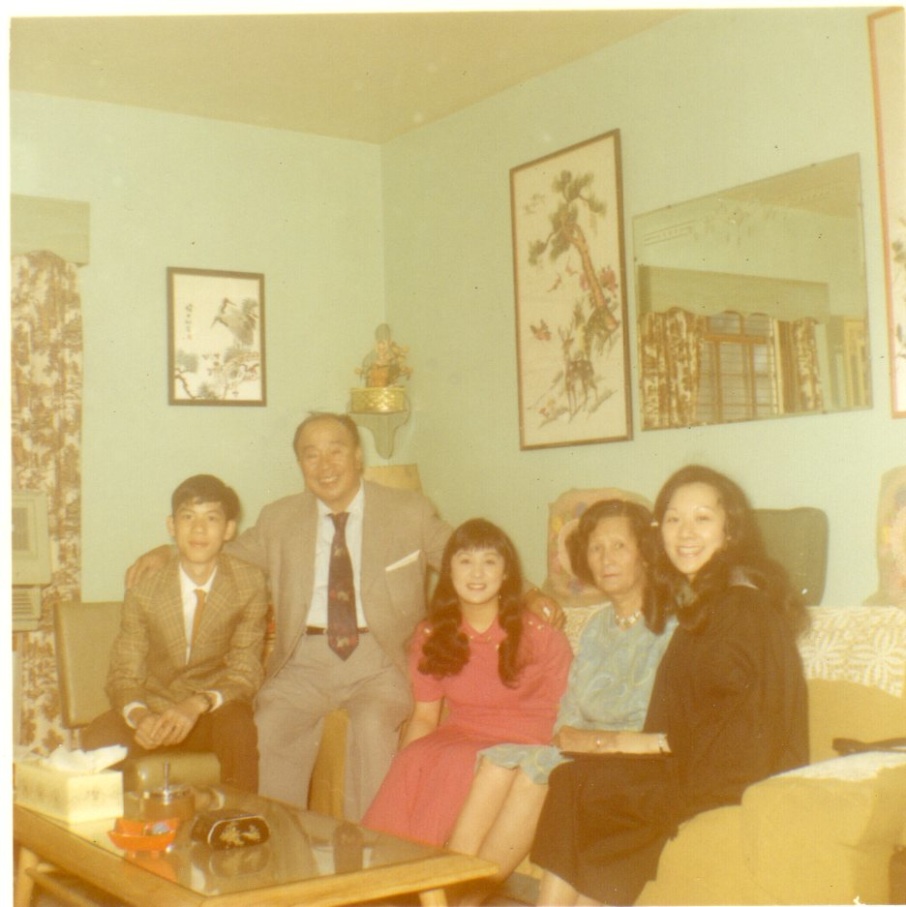
For reasons unknown to all of us, my grandfather and Uncle Wah sold Mar’s Gardens in 1972 to their chefs, Sam Gee and Hoover Mar. At some point, they’d also sold The Circle. We’re not sure when. Both restaurants, as far as we know, are long gone now.
After he sold them, he could finally spend time at home with my grandmother and with my uncle. He and my grandmother loved fishing together. Perhaps they were making up for those 24 years when they were separated from each other.
My mom and aunt had since moved west to San Francisco after graduating college, making the opposite journey their father had made all those years before.
In 1974, the whole family reunited at Mar’s Gardens for an elaborate banquet feast of bird’s nest soup, roast duck, and whole poached chickens. It was a joyous celebration for my aunt, who’d just gotten married. It felt like a true homecoming. Five months after that banquet, in 1975, my grandfather died of a heart attack at the age of 62. He spent 24 years trying to be with his family; he got to spend 19 with them.
There’s more to this story than the restaurants, of course, as there are with any immigrant tale. Young Mar was more than just a restaurateur. He was a husband and a father of three. He was a cook and a pool hustler, and an amateur boxer, too. He loved to paint, and to fish. He sponsored other Chinese immigrants struggling to make it to America. He is the grandfather, the Gong-Gong, I never got to meet. And even though his restaurants are now long gone, and so is he, my family wouldn’t be where we are today without him.
Yes, his restaurants may have been 1,700 miles away from the Chinatown he grew up in, but they served the same purpose that so many other Chinatown restaurants served, and still serve today. They were places that gave our family, and so many other families, a way to thrive. Even if they weren’t critically acclaimed, they were groundbreaking in their own way. The foods they served, whether it was fried chicken, peach pie, butterflied shrimp, or chop suey, brought communities together — a predominantly white community that ultimately welcomed Young Mar and his family, and became customers of his restaurant, and a Chinese American community also beginning to call Kansas home.
▪️
I didn’t really understand what that meant until a few years ago when I met one of my grandfather’s restaurant regulars, Dean White, on a business trip in Puerto Rico. It was completely by chance. Never did I imagine I’d meet someone who knew my grandfather at a gathering for meeting planners thinking of hosting their future events in the Caribbean. At one point during the trip, Dean mentioned to the group that he had lived most of his life in Wichita. It was where he and his family started their own business, a flower shop that’s still around to this day. So, later, during a bus ride to check out one of the hotels on the island, I asked him if he’d ever been to a restaurant called Mar’s Gardens. He nodded yes immediately.
Dean was 84 at the time, but his memories of Mar’s Gardens, and of my grandfather were still sharp. He told me how much he loved the fried chicken. He remembered my grandfather’s warmth and friendly demeanor. He said he could still picture him standing by the cash register.
It’s funny, because one of the few photos we still have of my grandfather is of him doing just that.
For me, though, my favorite photo of him is one where he is standing inside the restaurant with his two daughters side by side. They’re wearing beautiful cheongsams that my grandmother made by hand, with silk brocade she brought with her to Wichita, all the way from Hong Kong. It’s the same cheongsam I wore as a little girl, and one I hope to pass on to my own daughter, or nieces some day. And he’s beaming.
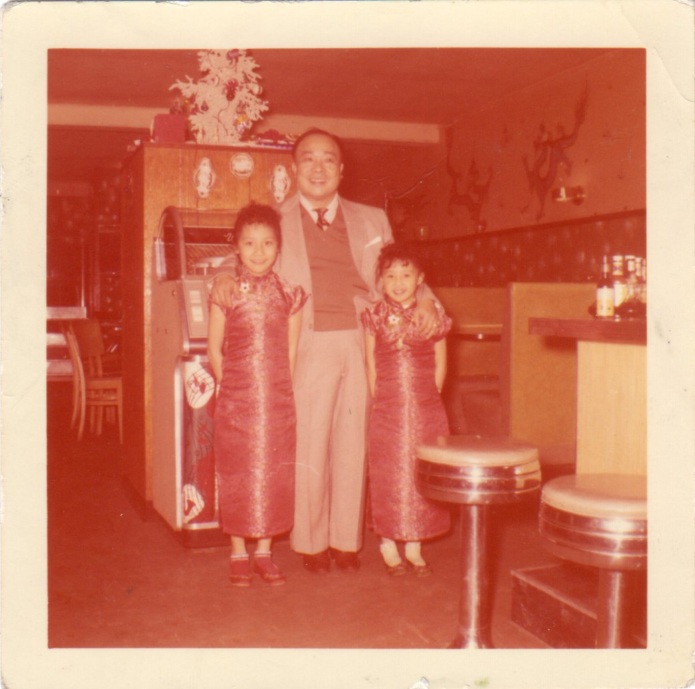
Deanna Ting is a Resy staff writer. Follow her on Instagram and Twitter. Follow Resy, too.




